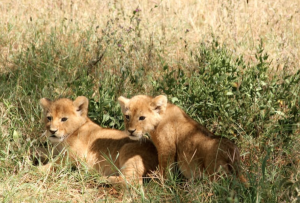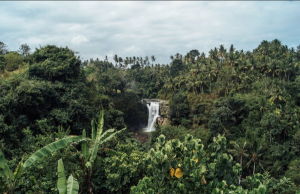Save a Tree to Save a Tiger
 There are about 7 species of tigers currently considered endangered or critically endangered by the World Wildlife Fund (WWF). If somebody shows you a picture of an endangered tiger and asks you “what is this?” your focus goes on the tiger, right?
There are about 7 species of tigers currently considered endangered or critically endangered by the World Wildlife Fund (WWF). If somebody shows you a picture of an endangered tiger and asks you “what is this?” your focus goes on the tiger, right?
Nobody is noticing the lush jungle around the predator or even the tree it’s hiding behind. That is where most “part-time environmentalists” show their true colors.
Everyone has had thoughts of “saving the environment” at one point or another. In most cases, however, people are not asking the right question(s).
What Can You Do?
For one, stay informed on all sides of the environmental protection story. Don’t just mindlessly feed on the information you are being served and call it a day. If you want to preserve life, cast your attention to all of its forms, not just sentient ones.
That means saving the tiger and its favorite preying spot. The tiger has a territory between 23 and 39 sq mi (60-100 sq km). Notwithstanding the predator’s own needs, think of the biodiversity contained in that small patch of land.
In the journals of Aldo Leopold, the environmentalist author skillfully notes, referring to the ecosystem:
“[…] who but a fool would discard seemingly useless parts? To keep every cog and wheel is the first precaution of intelligent tinkering.”
 Tropical rainforests, savannahs, the tundra, woodlands. What do all of these have in common? The plant life contained in them forms the basis of all food webs and the correct functioning of the ecosystem.
Tropical rainforests, savannahs, the tundra, woodlands. What do all of these have in common? The plant life contained in them forms the basis of all food webs and the correct functioning of the ecosystem.
Want to save an endangered species? Start by nurturing the mechanism that keeps the whole thing together.Much of nature we still don’t understand. But Aldo Leopold knew what he was talking about when he said if you were going to mess with nature, at least keep all the parts.
There are many projects to support that help keep non-cultivated or undescribed plants in hobby or collection levels.
Read the Labels
Now, you can’t exactly get a flight to the nearest rainforest and start protesting logging and deforestation operations. Not only will it not solve anything, in the long run, you will most likely end up with expensive legal trouble or worse. Many people have known to turn up missing when pushing against destruction by legal and illegal timber and farming.
What you can do, however, is to get informed about what products directly or indirectly harm plant life worldwide. Read the labels, they’re there for a reason. If the items contain ingredients that are a detriment to entire ecosystems, consider a substituent.
Luckily, a quick Google search will reveal the best choices. That means you don’t have to do a lot of research in the first place.
It’s a simple case of “supply and demand.” If people stop buying things that hurt habitat and the rainforest, companies will start devoting resources towards more eco-friendly solutions due to a lack of profits.
 “The customer is king,” right?
“The customer is king,” right?
Take, for example, palm oil. Over 66 million tons of palm oil is used annually to make vegetable oil, and other products. Alternatives such as sunflower and olive oil have a much lower impact in general. Certain types of lumber and wood products, some animal parts, and other consumer items can be avoided for a start.
There are many projects you can support that help keep non-cultivated or undescribed plants. Support plant-based projects to protect habitat and environment conservation through cultivation efforts. Without a habitat, it is hopeless to try and preserve the species that live there.
by German Rodriguez
 Biotope One A Study of Flora and Fauna
Biotope One A Study of Flora and Fauna  “The customer is king,” right?
“The customer is king,” right?


